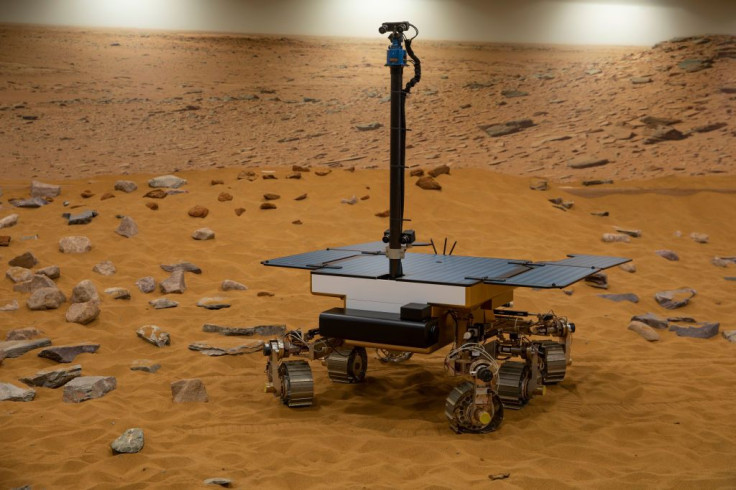Mars Photos Show Blue 'Devils' On Red Planet Surface

A stunning new image of the surface of the planet Mars was recently released by the European Space Agency’s (ESA) Roscosmos ExoMars Trace Gas Orbiter, and it showed more than the usual desert scenario.
The picture seemingly showed a "hairy blue spider" that looked like it was stretching its legs across the surface of the Red Planet. The photo is actually a color-composite image of what ESA has labeled a “dust devil frenzy.”
Today is @ESA_TGO’s three year anniversary since launch, and we’re celebrating with this super image gallery of recent postcards from #Mars, including immersive #3D stereo views & a sighting of @NASAInSight! #ExoMars 📷https://t.co/HtHsFjbZtd pic.twitter.com/UU19TGAnFg
— ESA_ExoMars (@ESA_ExoMars) March 14, 2019
According to ESA, the actual color of the “creature” is red, and the photo shows the likely result of thousands of small dust devils going around Mars’ landscape. The ExoMars Colour and Stereo Surface Imaging System (Cassis) was also able to take a very rare photo of NASA’s InSight lander. In the photo, scientists can see the InSight, its 2018 landing blast marks, its heat shield and even its parachute.
#Hello @NASAInSight! Finally had the opportunity to image @NASA’s new lander on #Mars earlier this month! Also spotted the heatshield & backshell landing sites! 🔎👋 Read more:
— ExoMars orbiter (@ESA_TGO) March 14, 2019
https://t.co/2xhpKFiBeB
📷 @ExoMars_CaSSIS #ExoMars pic.twitter.com/CpYP69vEqB
"It is the first time a European instrument has identified a lander and related equipment on the Red Planet," ESA said in their website.
The photos taken by ESA’s Cassis has boosted the agency’s confidence that it will be successful in the upcoming ExoMars rover mission that is scheduled for mid-2020. The European space agency’s orbiter has been operating around the Red Planet since 2016. It was supposed to function alongside the Schiaparelli lander, but the latter crashed upon descent.
One of ExoMars’ main functions is to investigate the surface of the Red Planet in search of methane and other gases. Much like the U.S. Insight lander, the ESA lander is also expected to drill Mars for rock samples.
ExoMars functions by complementing the work of NASA’s Insight. The ESA orbiter helps monitor the Martian surface around Insight’s impact sites.
“The ExoMars Trace Gas Orbiter is [also] being used to relay data from InSight to Earth. Because of this function, to avoid uncertainties in communications, we had not been able to point the camera towards the landing site so far -- we had to wait until the landing site passed directly under the spacecraft to get this image,” Nicolas Thomas, CaSSIS principal investigator from the University of Bern in Switzerland, said about the picture of NASA’s Insight.
The ExoMars rover, called Rosalind Franklin, will be launched from Earth in 2020 and is expected to arrive on the surface of Mars by 2021.
© Copyright IBTimes 2025. All rights reserved.





















